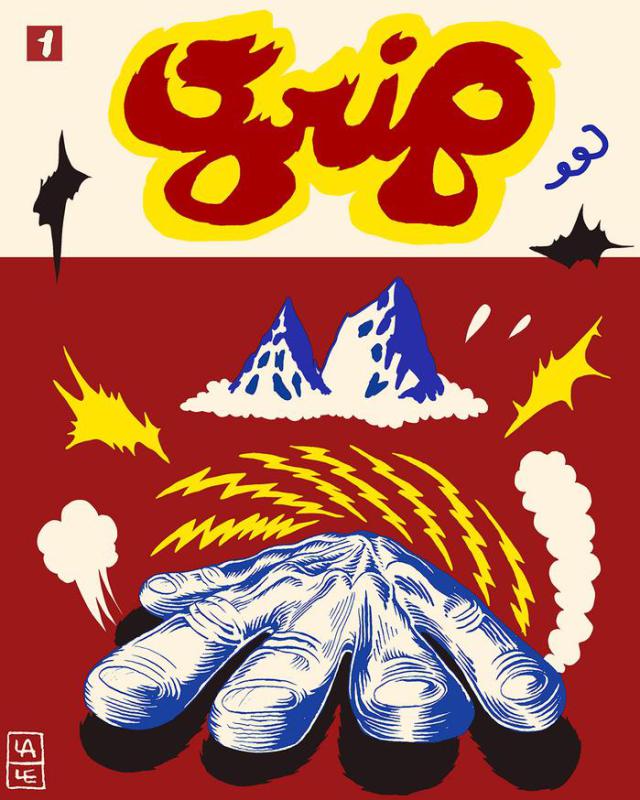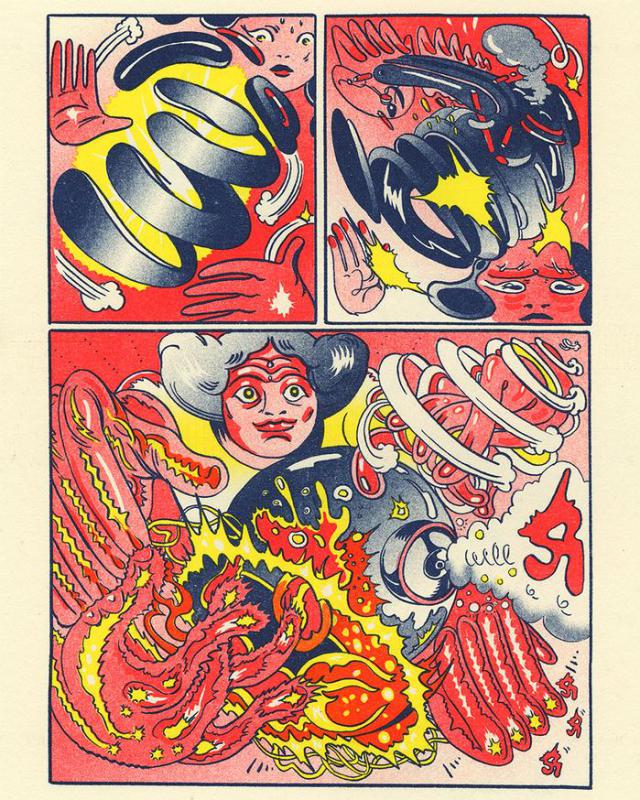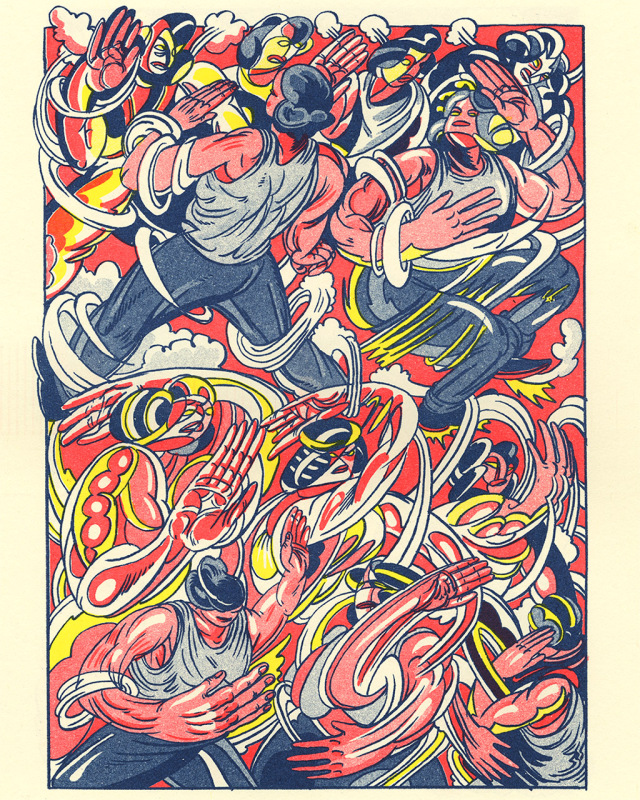
Where the “average” wordless comic often comes across as the result of a choice made by the cartoonist to communicate her or his story by means of the purely visual “half” of the medium, Lale Westvind’s 2018-released Grip (specifically, Grip Vol. 1, as this is the 68-page opening installment of a planned longer-form “graphic novel”) seems to eschew dialogue, captions, sound effects, and related ephemera (barring the occasional, expertly-placed exception) as a matter of sheer necessity, recognizing them less as an unnecessary encumbrance that would only get in the way of the tale being told, but as outright obstacles that would actually detract from the proceedings. I defy anyone to get any further than the first page and disagree with that assessment.
Westvind’s nothing if not an inarguable master of her craft at this point — primarily known for her contributions to any number of high-profile anthologies, this marks her longest work to date, and she approaches it with a staggering amount of entirely-earned confidence, a literal whirlwind giving her unnamed protagonist/heroine the “power” of constantly-moving hands (hence, ya know, the title and all that) while a metaphorical whirlwind of at least equal might, power and, when necessary, ferocity, rushes readers along at breakneck pace from one city to another, one blue-collar job to another, one exotic locale to another, finally culminating in a battle royale against an equally-cyclonic “supervillain” in a jungle clearing that’s about to get “cleared out” a whole lot more.

No arguing that the plot is bare-bones stuff, but the subtext in anything but: hiding in plain sight within all of Westvind’s post-psychedelic visual explosions, lavishly rendered in a rich risograph tri-color scheme by printers/publishers Perfectly Acceptable Press (who, as is absolutely expected of them by this point, pull out all the stops as far as the book’s production values go), is one of the most earnest and joyous expressions of thanks to women working in the trades you’re ever likely to see. Seriously, “Rosie The Riveter” has nothing on Westvind’s thick, powerful, muscular, always-assured-and-confident carpenters, welders, and plumbers, all of whom are observed in close detail by our heroine and her temporary sidekick (in fairness, a student — of life, at the very least) with a kind of reverent awe that provides the inspiration necessary for them to continue along on their own paths. Fuck simple notions of “empowerment” — these women are already empowered, and Westvind’s meticulous attention to their facial expression, body language, and other physical mannerisms makes it clear as day that it never occurred to any of them to be any other way.

Men, when they appear, are of little to no use — cowering, sweaty, at the mercy of the technologies reducing them to redundancy. This would probably piss of the retrograde troglodytes that make up the “comicsgate” crowd, but who fucking cares — they don’t even know that good (check that, great) books like this exist in the first place. Seriously, objects of utility such as toasters and tea kettles serve a more integral role in this narrative than the guys do. “MRA”s may bitch and moan, but welcome to the other side of the coin, chumps : a story this unapologetically celebratory in its depiction of the achievements of working women is long overdue in the comics medium.
On a purely practical level that even the most dunder-headed reader should be able to appreciate, though, it has to be said that Westvind delineates action like few others are able to — largely because they haven’t even conceived of her singular amalgamation of the fantastic with the visually-relatable. Physical forms disassemble, coalesce, transmogrify, even evolve in ways that are no doubt fantastic (in the truest sense of the word) but at the same time eminently naturalistic and easy to both follow along with and believe in. Add to that terrifically exciting use of the elements (most especially, as you’ve no doubt already surmised, wind), a cineaste‘s eye for blocking and composition, and a fluid succession of scenes that build upon one another as they move at faster-than-light speed toward a genuinely epic finale, and what you’ve got is best described with a term I just about never resort to due to sheer over-use, but that absolutely applies in this case: a visual marvel.

Perhaps the most remarkable thing about Grip, though, is the sheer audaciousness of the magnificent switcheroo Westvind pulls off: She never gives you a chance to slow down and think, but by the time it’s all over, you realize her message has sunk in clear as day. If you’re ready to receive that message loud, proud, and clear, then order this one up with all due haste from this — errrrmmm — “handy” link :https://www.perfectly-acceptable.com/item/grip/
Tags: art, Columns, Comic Books, Comics, Lale Westvind, New York City, Perfectly Acceptable Press


No Comments